Ficus Benjamina: [Planting, Care, Irrigation, Substrate and Characteristics]
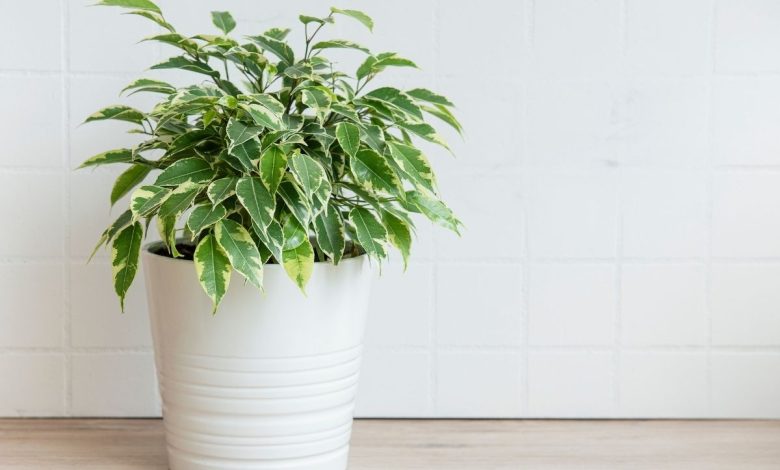
The Ficus Benjamina is a well-known plant worldwide, which is grown both outdoors and indoors.
It comes from Southeast Asia and belongs to the Moraceae family and in many places it is simply called Ficus.
It has a large grayish-brown bark and does very well in a large pot.
Characteristics of the ficus benjamina
- Family: It is related to the blackberry family ( Moraceae).
- Genus: Ficus.
- Variety name: Ficus tree (Ficus benjamina).
- Common name: Ficus, Ficus benjamina, small- leaved Ficus, Matapalo, Benjamin tree.
- Tree or shrub: evergreen.
- Origin: Located throughout the tropical belt, mainly in India, China, Malaysia and Australia.
- Leaf Color: Dark green, light green or creamy white, shiny leaves.
- Growth height in indoor cultivation: 200 to 300 cm, rarely higher.
- Leaf Shapes: Oval, obovate, oval-lanceolate with smooth or ruffled edge.
- Flower Color: Creamy white to yellowish in summer.
- Fruit: Spherical orange figs, with a diameter of 2 to 2.5 cm.
- Minimum temperature: 15 degrees centigrade.
- Warning: All parts of this plant are toxic!
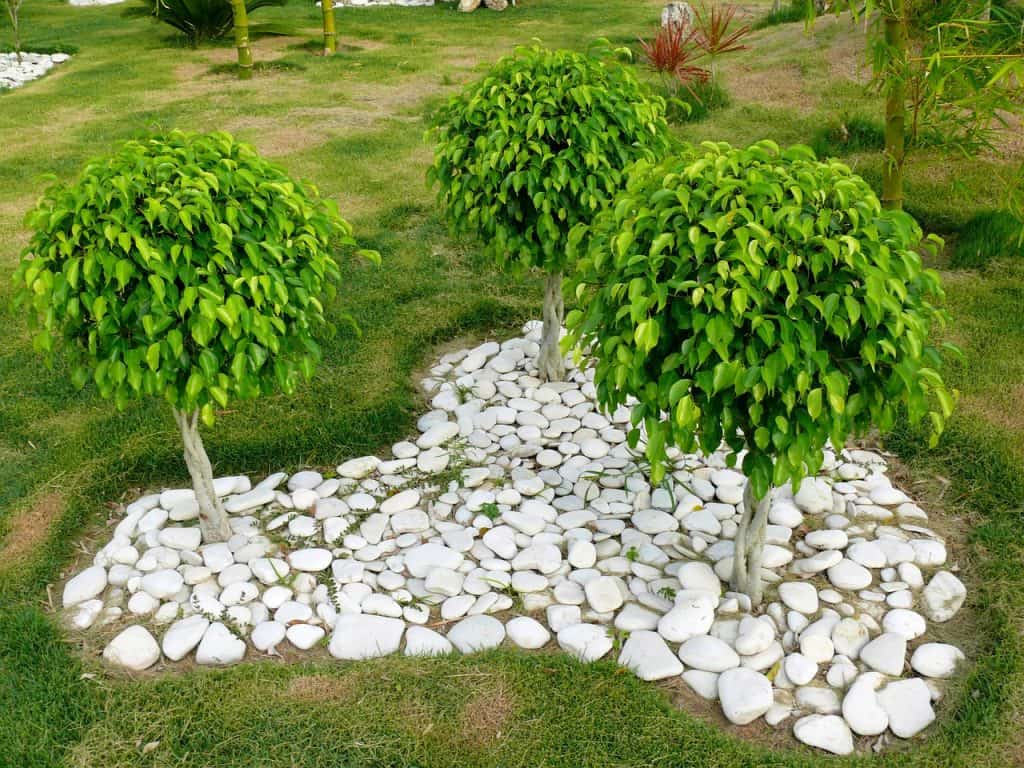
Outside the home, its height can reach up to 30 meters and its very shiny leaves usually measure between 5 and 12 centimeters long, with an oval shape and a very unique fall that characterizes the morphology of this entire plant.
Today, there are many varieties with leaves tinged with different colors and stems that are twisted or twisted.
And it is one of the best air purifying plants that we can have, because it is capable of filtering toxic substances present in the earth’s atmosphere.
It does not require great care, but there are some keys that should not be ignored when it comes to having it at home.
Temperature: Where to plant the ficus benjamina?
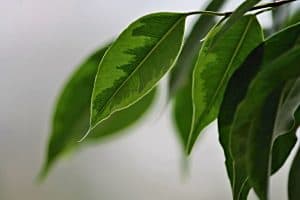 The first big fact is that this little tree does not tolerate low and extreme temperatures under any circumstances.
The first big fact is that this little tree does not tolerate low and extreme temperatures under any circumstances.
Its leaves are very susceptible to cold, so do not take it out of your house at all in winter.
Remember that they were born in tropical and subtropical climates, therefore they can withstand a lot of heat and humidity. This allows you to take it out to a terrace or garden in the summer, so that it can enjoy the sunny days at the end of spring.
Light: What needs do you have?
It prefers to live in a relaxed indoor environment, with some sunlight, without direct incidence but with enough freshness for its development to be fluid. This does not mean that you have to place it in a very shady or dark place. Nope.
That will affect its growth, which will not be the same, but ditto this plant in the dark will grow, only with much less exuberance.
Substrate and Fertilizer: How do we prepare the land?
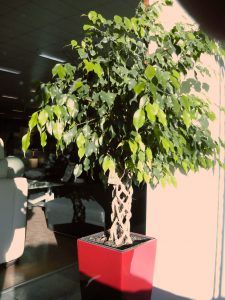 A fertilized land, with a suitable acidity, maintains an estimated pH between 5 to 6, but it is worth saying that they also adapt to soils with alkaline or neutral pH.
A fertilized land, with a suitable acidity, maintains an estimated pH between 5 to 6, but it is worth saying that they also adapt to soils with alkaline or neutral pH.
When it lives in a pot, you should not be careless and believe that it can be kept there indefinitely. Take care of the absorption of water in the roots.
Place a good layer of clay or gravel at the bottom of the pot to prevent the irrigation water from pooling.
Do it in spring, about two years after growth and development are consolidated. But enrich the substrate with a fertilizer enriched with humus, peat or compost.
In the spring-summer season it is also essential to apply a fertilizer to the irrigation water so that it can receive the necessary nutrients.
Plant the ficus benjamina step by step
- Select a healthy twig to cut.
- Remove the cut below a leaf knot.
- Cut the branch off the plant.
- Remove the lower leaves from the cutting.
- Transfer the cut to a glass of fresh water.
- Give the cut stem plenty of light and fresh water.
- Let the cutting root for about three weeks.
Irrigation: How and how often do we water?
 It has to be irrigated with some caution in the hottest season, in order to prevent the substrate from drying out. Don’t you dare turn it into a slum. It should dry out well before you start the next watering.
It has to be irrigated with some caution in the hottest season, in order to prevent the substrate from drying out. Don’t you dare turn it into a slum. It should dry out well before you start the next watering.
Fungi attack the plant a lot and that is why excess moisture is counterproductive.
If you want to achieve an ideal humidity of at least 80%, find the saucer of the pot and add expanded clay. With this simple action and a good spraying of the branches and trunk of the Ficus you can give it a lot of health.
In the autumn- winter period, the irrigation services must be spaced out because the plant has entered a state of dormancy or rest. Once every 15 days will suffice to supply water.
Sometimes, it will begin to shed its leaves, but you should not be scared: it is normal, especially when spring arrives and its organism is activated. Unless its leaves change color and turn yellow, a sign that there is either too much water or a lack of nutrients present in the substrate.
And if the leaves turn black, it is because a fungus has attacked it and it is time to act very quickly to prevent its spread, with the application of a good fungicide.
They also get like this because of excessive cold, humidity or, simply, poor environmental ventilation.
The Ficus can live for many years if you give it proper care. And you can make a giant tree.
Pests and diseases of ficus benjamina
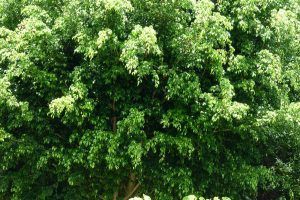 When a Ficus benjamina is attacked by some pests, it drops its leaves as a defense strategy. Previously, the plant removes the remaining nutrients from the foliage, so that it turns yellow.
When a Ficus benjamina is attacked by some pests, it drops its leaves as a defense strategy. Previously, the plant removes the remaining nutrients from the foliage, so that it turns yellow.
In this case, you often have to deal with scale insects, which find perfect living conditions in the fragile bark.
If these pests are identified, a high percentage of alcohol can fix the problem at least in the initial phase of infection. Dip cotton swabs in rubbing alcohol and spray them repeatedly over the insect scales.
The alcohol breaks down the protective armor and kills the pests. If the infestation is already advanced, you may need to apply more severe insecticides such as neem oil or potassium soap.
verticillium wilt
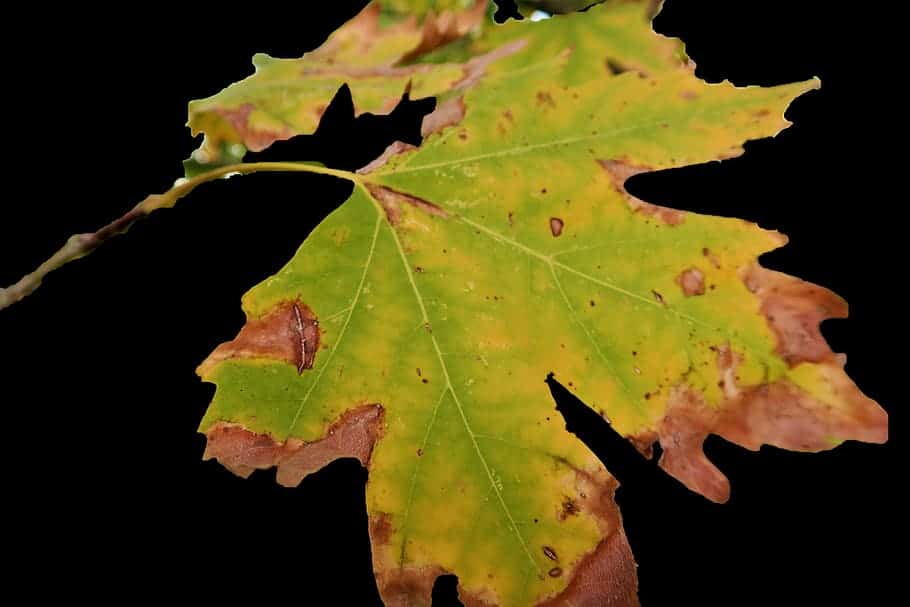 Verticillium or Verticillium wilt is a common soil fungus that thrives in temperate climates around the world and can be present in the soil for decades.
Verticillium or Verticillium wilt is a common soil fungus that thrives in temperate climates around the world and can be present in the soil for decades.
Verticillium wilt overwinters in the soil as dormant mycelium or tiny dormant black structures called microsclerotia, waiting for favorable conditions to return.
They enter damaged plant tissue through the roots and multiply. Many common weeds, such as dandelions and weeds, can be Verticillium host species.
Verticillium wilt is a disease that affects more than 350 species of eudicolous plants. It is caused by six species of Verticillium fungi: Verticillium dahliae, Verticillium albo-atrum, Verticillium longisporum, Verticillium nubilum, Verticillium theobromae, and Verticillium tricorpus.
Many plants with significant economic weight are susceptible, such as cotton, tomatoes, potatoes, oilseed rape, aubergines, peppers, and ornamental plants, as well as others in natural vegetation communities.
Many species and cultivars of eudicots are resistant to the disease, and all monocots, gymnosperms, and ferns are immune. To know more: Verticillium wilt in the Orchard: What is it? How do we identify it?
Ficus benjamina toxicity
Caution: All animals poisoning symptoms such as nausea, vomiting and diarrhea.
If you think you may have been poisoned by ficus benjamina, see a doctor immediately.
How long does ficus benjamina live?
The average lifespan of a ficus benjamina varies depending on where it is planted.
Indoors it rarely exceeds 10 years, while outdoors it is likely to reach 200 years.
How long does it take to grow the ficus benjamina?
In approximately 6 years, the ficus benjamina will already have a well-formed structure.
How long does it take to produce fruit?
It can start its productive stage about 5 years after sowing, but only plants that are outdoors.
Ficus benjamina kept indoors do not flower and therefore do not produce fruit.
Can it be grown in a pot?
It can be grown in pots without any problem.
This has led to it being one of the favorite houseplant options.
How many times does the ficus benjamina produce fruit?
Depending on the climate and the space in which it is planted, it can generate between 1 and 2 blooms per year.
Should ficus benjamina be pollinated to obtain fruit?
Pollination is carried out with the intervention of a wasp of the Agaonidae family.
How cold can ficus benjamina tolerate?
It must be worked in spaces where winter is not less than 15° C, resisting up to 10° C at most.
How many ficus benjaminas can be planted per hectare?
The number of specimens will depend a lot on the conditions of the land in terms of its shape. The normal thing is that it goes between 110 and 160 copies.
How much heat and/or drought can ficus benjamina tolerate?
It likes mild summers, but even so it is capable of withstanding up to 30° C, as long as it is accompanied by an efficient irrigation system.
This species does not like to be in drought.

![Photo of Plusia or Green Worm: [Characteristics, Detection, Effects and Treatment]](https://www.complete-gardening.com/wp-content/uploads/2022/08/plusia-or-green-worm-characteristics-detection-effects-and-treatment.jpg)

![Photo of Shallot: [Growing, Irrigation, Substrate, Harvest and Much more]](https://www.complete-gardening.com/wp-content/uploads/2022/08/shallot-growing-irrigation-substrate-harvest-and-much-more-390x220.jpg)
